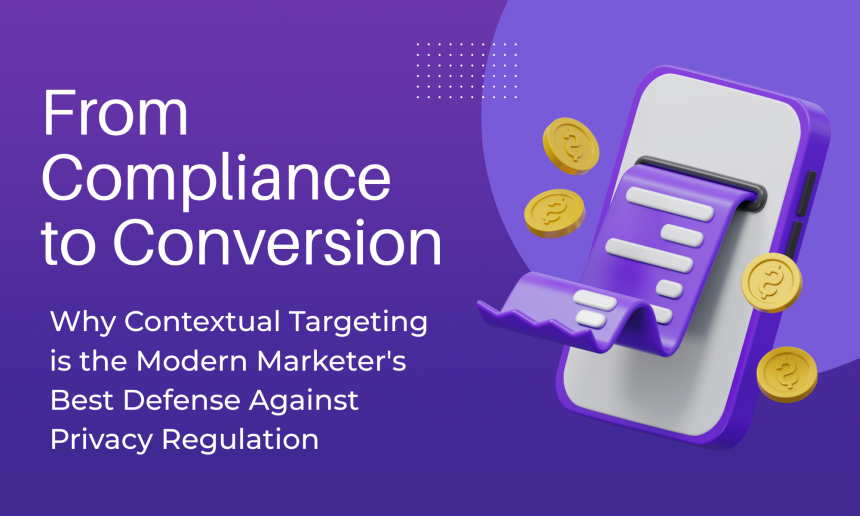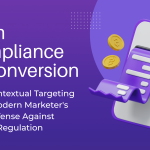The impending obsolescence of third-party cookies and the tightening grip of global privacy regulations have fundamentally reshaped the digital advertising landscape, forcing marketers to seek resilient, privacy-centric strategies, and one such powerful solution is contextual advertising, which offers an unparalleled combination of compliance and high-intent audience targeting. For years, the digital economy ran on the silent, pervasive exchange of personal data. Advertisers became accustomed to tracing a user’s every click, search, and purchase across the web, building intricate profiles to deliver hyper-personalized ads. However, this era of unrestrained behavioral targeting has abruptly ended. The regulatory and technological tectonic plates have shifted, making the old model not only ethically questionable but functionally unsustainable. The modern marketer must now pivot from chasing people to understanding environments, transforming the crisis of compliance into a clear path toward more meaningful conversion.
The Great Privacy Reckoning: GDPR, CCPA, and Browser Blockades
The seismic shift toward content-based targeting was not organic; it was catalyzed by a potent combination of worldwide legislative action and decisive moves by browser developers.
On the legislative front, the European Union’s General Data Protection Regulation (GDPR) set the global standard for consumer data privacy. Enacted in 2018, GDPR mandated explicit, informed consent for processing personal data, effectively dismantling the ‘implied consent’ models upon which behavioral tracking thrived. It granted consumers the “right to be forgotten” and the right to object to processing, backed by the threat of colossal fines (up to 4% of annual global turnover). Following suit, the California Consumer Privacy Act (CCPA) and its successor, the CPRA, introduced similar rights in the US, giving Californian residents control over the sale of their personal information. These regulations did not outlaw advertising, but they did severely restrict the collection and use of the personal identifiers necessary for traditional behavioral targeting.
Concurrently, major web browser companies began to implement restrictions that rendered third-party cookies ineffective. Apple’s Safari introduced Intelligent Tracking Prevention (ITP), and Mozilla’s Firefox rolled out Enhanced Tracking Protection (ETP), both designed to block or severely limit the lifespan of third-party cookies by default. The final, decisive blow came with Google Chrome’s announced deprecation of third-party cookies, an action that affects the overwhelming majority of internet users. These browser changes are not merely minor updates; they are a fundamental re-engineering of the web’s infrastructure, signaling the death knell for the foundational technology of behavioral advertising. This dual pressure, from the law and from the technology gatekeepers, has left marketers with a clear imperative: find a method that respects privacy by design.
The Flaws of Behavioral Tracking in a Cookieless World

Behavioral advertising, the reliance on third-party cookies to track user history across different websites, was always inherently intrusive. It operated on the premise that an individual’s past behavior is the best predictor of their future needs, regardless of their current mindset. This approach was data-rich but context-poor, leading to several diminishing returns:
- Diminishing Relevance and User Experience: It often resulted in “stalker ads,” where a consumer was relentlessly pursued by an ad for an item they had already purchased. This invasive persistence bred ad fatigue and hostility, damaging the brand’s perception.
- Data Risk and Compliance Nightmares: Storing and managing vast pools of personally identifiable information (PII) created massive security liabilities and subjected companies to intense regulatory scrutiny and potential litigation under GDPR and CCPA.
- Wasted Spend: As cookies began to degrade, behavioral targeting became less precise, leading to inefficient spending on poorly targeted or irrelevant placements.
The entire structure of behavioral advertising was built on a fragile foundation of non-consensual surveillance. As that foundation crumbles, marketers must transition to a more robust, content-based model that prioritizes momentary intent over historical identity.
Contextual Targeting Defined: A Return to High-Intent Environments

Contextual targeting is the strategic placement of advertisements on a webpage based solely on the content, keywords, and overall sentiment of that page, without any knowledge of the user’s past browsing history or identity. If a user is reading an article about the best sustainable coffee brands, an ad for a new biodegradable espresso machine is served. The relevance is derived from the environment the user is actively engaging with, not the personal profile they may have been assigned.
This strategy is not a throwback to the simple, keyword-matching systems of the early internet. Modern contextual advertising is powered by sophisticated Artificial Intelligence (AI) and Machine Learning (ML) technologies, specifically Natural Language Processing (NLP). These advanced systems do more than just match a keyword; they analyze the page’s entire narrative structure, emotional tone, imagery, and video content to grasp the true, nuanced meaning of the content. This deep-learning capability ensures ads are placed in highly thematic and resonant environments, guaranteeing brand safety while maximizing engagement.
This core difference makes contextual targeting the ideal privacy-first solution:
- Privacy-Centric by Design: It requires zero PII, zero cross-site tracking, and zero dependence on third-party cookies, instantly satisfying the fundamental requirements of GDPR, CCPA, and all current browser restrictions.
- Enhanced Relevance: When a user is immersed in a topic, their intent to learn or purchase related products is at its peak. Contextual ads capture this high-intent moment, leading to higher Click-Through Rates (CTR) and better conversion efficacy than generic or intrusive behavioral ads.
- Simplicity and Efficiency: It eliminates the complexity, cost, and legal risk associated with managing user data infrastructure, simplifying the ad placement process for publishers and advertisers alike.
From Compliance to Conversion: The Business Upside
For the savvy marketer, the shift to a privacy-first world is not a limitation; it is an opportunity for superior performance. By embracing contextual targeting, businesses can achieve a powerful equilibrium where ethical compliance directly feeds commercial success.
1. Superior Engagement and Efficiency
Contextual campaigns have repeatedly demonstrated competitive performance against their behavioral counterparts. By placing an ad in a highly relevant and thematically aligned article, the marketer ensures they are reaching an audience that is already interested in the topic, leading to superior engagement rates. Case studies across publishing, e-commerce, and automotive industries have shown significant increases in ad engagement rates and higher click-through performance by aligning ad content with user intent. This strategy inherently reduces wasted ad spend because the targeting is based on an active, real-time interest rather than a potentially stale historical profile.
2. Fortified Brand Safety and Suitability
Modern contextual solutions offer unparalleled control over where ads appear. Through sentiment analysis and advanced content scoring, marketers can ensure their ads not only appear next to relevant topics (brand suitability) but also avoid sensitive or inappropriate content (brand safety). For instance, a travel brand can target articles about ‘tropical destinations’ but exclude those related to ‘natural disasters’ in those regions. This granular control protects brand reputation in a way that generalized behavioral tracking networks often could not.
3. Future-Proofing the Marketing Stack
Adopting contextual advertising future-proofs the marketing strategy against further regulatory tightening or technological updates. Since the approach does not rely on personal identifiers or cross-site tracking, it is impervious to future anti-tracking measures. It provides a stable, resilient platform for digital spending, allowing advertisers to focus on creative quality and content strategy rather than constant technological firefighting. The use of first-party data and emerging privacy-focused identity solutions can be layered on top of a strong contextual foundation, creating a holistic strategy that is both highly effective and legally compliant.
In conclusion, the privacy revolution, driven by regulations like GDPR and CCPA and the cookie deprecation by major browsers, has forced a necessary reckoning in digital marketing. Marketers can no longer rely on the personal data crutch. Instead, the focus has shifted to the power of context, intent, and relevance. Contextual advertising stands as the definitive answer to this challenge, transforming compliance from a costly obligation into a competitive advantage. By moving from the intrusive, precarious world of user tracking to the transparent, high-intent world of content alignment, marketers are building a more ethical, efficient, and ultimately more conversion-driven future for digital advertising.
Lynn Martelli is an editor at Readability. She received her MFA in Creative Writing from Antioch University and has worked as an editor for over 10 years. Lynn has edited a wide variety of books, including fiction, non-fiction, memoirs, and more. In her free time, Lynn enjoys reading, writing, and spending time with her family and friends.















